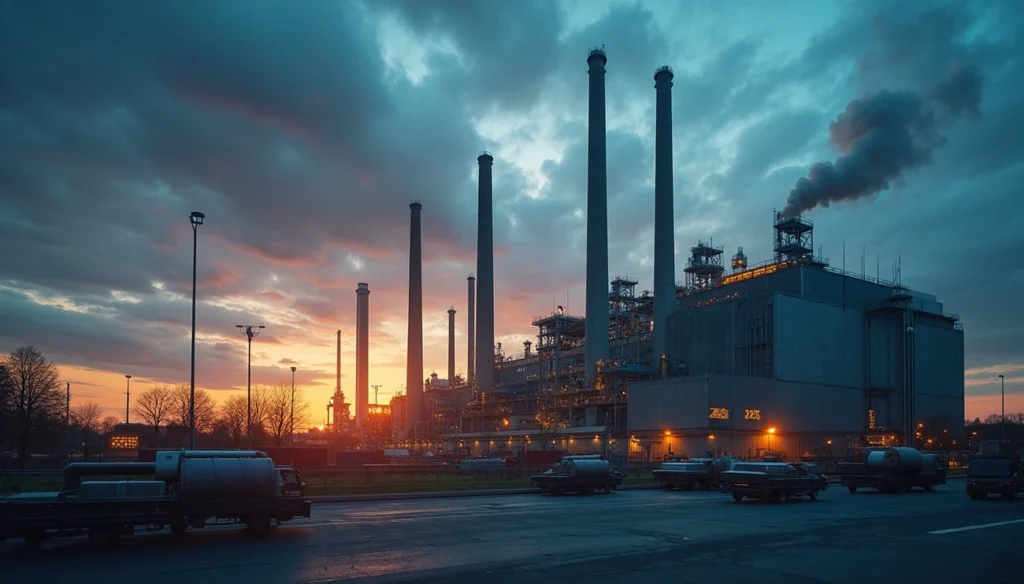

The European Parliament passed CBAM with 450 votes for, 115 against, and 55 abstentions, and it became effective on May 17, 2023. Regulation 2023/956 launched the EU’s Carbon Border Adjustment Mechanism (CBAM) to reduce carbon emissions on October 1, 2023. Importers of certain products into the EU need to understand the reporting requirements during the transitional phase from 2023-2025.
CBAM serves as a trade tool that creates a level playing field for products affected by global climate regulation. The regulation’s implementation will happen in phases and arrange with the phase-out of free allowances under the EU Emissions Trading System (ETS). The original CBAM implementing regulation covers 303 energy-intensive products, which include iron, steel, cement, fertilizers, aluminum, electricity, and hydrogen. These products represent about 3% of EU imports. Your business’s understanding of CBAM’s workings is significant since the mechanism will be fully operational by 2026.
Regulation (EU) 2023/956 created the Carbon Border Adjustment Mechanism (CBAM) as part of the European Green Deal and the “Fit for 55” legislative package. The EU ratified this groundbreaking regulation in May 2023 to prevent carbon leakage and promote cleaner industrial production beyond EU borders.
CBAM implementation follows a clear timeline. The transitional phase started October 1, 2023 and runs through December 31, 2025. Importers must submit quarterly reports on embedded emissions during this learning period without any financial obligations. The first report deadline was January 31, 2024, which covered goods imported in Q4 2023. The definitive CBAM regime will begin January 1, 2026. You’ll need to become an “authorized CBAM declarant” to import affected products after this date.
CBAM works alongside the EU’s Emissions Trading System. The ETS limits emissions from EU power production and industrial installations, while CBAM tackles carbon leakage risk by matching carbon pricing for imports. CBAM differs from the ETS cap-and-trade system by allowing unlimited certificate purchases but keeps price parity with ETS allowances. The system’s gradual rollout matches perfectly with the free ETS allowances phase-out. CBAM will apply proportionally to emissions not covered by those allowances until they completely disappear in 2034.
CBAM helps the EU set fair carbon prices for goods entering its market. The system targets carbon leakage—when companies move carbon-intensive production to countries with weaker climate policies. These carbon-intensive sectors face the highest leakage risk:
The regulation gives equal treatment to imports and EU-produced goods while driving global decarbonization efforts. CBAM stands as a vital part of the EU’s plan to achieve climate neutrality by 2050 and reduce greenhouse gas emissions by at least 55% by 2030 compared to 1990 levels.
The CBAM transitional phase reaches its most important point in 2025 with several system improvements. Your preparation needs a clear understanding of how everything works.
You must submit CBAM reports every quarter in 2025 based on strict deadlines. Q1 (Jan-Mar) reports are due by April 30, Q2 (Apr-Jun) by July 31, Q3 (Jul-Sep) by October 31, and Q4 (Oct-Dec) by January 31, 2026. Your reports should include imported goods’ total quantity, actual embedded emissions, indirect emissions, and carbon price paid in the origin country. The submission deadline falls one month after each quarter ends. This phase needs no financial payments, but unreported emissions could lead to penalties between €10 to €50 per ton.
The CBAM Registry launches a new portal section on January 1, 2025. This helps installation operators outside the EU share data with reporting declarants more easily. You’ll need your Revenue Online Service (ROS) digital certificate to access the registry from the device where you saved it. The registry connects the Commission, competent authorities, customs authorities, and traders. On top of that, it becomes essential to apply for “authorized CBAM declarant” status early in 2025, as this becomes mandatory from January 1, 2026.
These seven carbon-intensive sectors will cover more than 50% of emissions in ETS covered sectors. A new 2025 update introduces a de minimis mass threshold that exempts imports up to 50 tons yearly per importer from CBAM rules. This exemption helps about 90% of importers—mainly SMEs and individuals—while still covering 99% of total CO₂ emissions from these sectors.
Embedded emissions combine direct emissions from manufacturing processes and indirect emissions from production’s electricity use. EU methods or equivalent methods become the only acceptable calculation options after December 31, 2024, as default values expire. Complex goods with precursors require emission calculations from both the production process and input materials.
Starting January 1, 2026, CBAM will move from just reporting to a complete financial system where importers need to buy certificates based on their embedded emissions. This change brings a major transformation in how carbon pricing works for EU market imports.
CBAM certificate prices match EU ETS allowance prices exactly. This gives equal treatment to domestic and imported goods. Weekly average auction prices of EU ETS allowances in €/ton of CO2 will determine certificate prices. This system will give importers the same carbon costs as EU producers. You can buy certificates through a central platform from 2026, and prices will change based on the carbon market.
You need to submit your annual CBAM declaration by May 31 after the import year. Your declaration must show:
You must register with national authorities and get authorization as a CBAM declarant before importing. CBAM imports into the EU can only be handled by authorized declarants. Applications will open from December 31, 2024.
Independent third parties must verify all emissions data. They analyze strategy, review documents, visit plants, and prepare verification reports. This independent certification makes sure everything is accurate and transparent, especially when reporting carbon prices paid in other countries.
You can now reduce your CBAM certificates if you show that you’ve already paid a carbon price during production in the origin country. The carbon price should be a tax, levy, fee, or emission allowance under a greenhouse gas emissions trading system to qualify. Countries that have emissions trading systems fully connected to the EU ETS don’t need to pay CBAM. This applies when they charge carbon prices effectively and don’t give exporters unfair rebates.
Businesses must deal with tough compliance rules as CBAM moves toward its final phase. Companies involved in cross-border trade need to think about trade effects and get ready to meet compliance requirements.
The EU carefully designed CBAM to align with World Trade Organization rules and its international commitments. Three features ensure fair treatment: actual emission values, price matching with EU ETS, and credit for carbon prices paid outside the EU. These elements create fair competition by treating imports and local production the same way. Legal experts say that true WTO compatibility depends on how rules work in practice rather than how they look on paper.
Getting real emissions data from suppliers is the biggest problem businesses face under CBAM requirements. We found that all but one of these companies used default values instead of actual data when they first reported. Many suppliers either can’t calculate embedded emissions or don’t want to help. Small shipments with low emissions or value suffer the most since data collection costs more than potential CBAM fees. The rules say you must show that you tried your best to get data and document failed attempts in the CBAM portal.
A new mass threshold makes compliance easier by freeing importers who bring in less than 50 tons yearly in industrial CBAM sectors. This new rule takes the place of the old €150 per shipment limit. So, 90% of importers—mostly smaller businesses—won’t need to comply, yet 99% of embedded emissions stay covered.
Most companies (over 60%) believe CBAM will force changes in their supply chains or business models. Cheating the system remains a serious issue, especially through artificial splitting of imports. Developing countries might take the hardest hit—Vietnam’s GDP could drop by 0.6% each year. Countries might respond by talking with the EU, building climate-focused regional partnerships, or fighting back with their own measures.
CBAM marks a radical alteration in the EU’s approach to carbon emissions beyond its borders. This piece explains how this mechanism works during its transition phase through 2025 and its full rollout starting January 2026.
Businesses get vital time to adapt through this step-by-step approach. They start with quarterly reporting without paying anything, then move to the full certificate system that matches EU ETS pricing. This steady rollout helps affected sectors get ready while the EU keeps pushing its climate goals forward.
Businesses that import goods from the seven carbon-intensive sectors need to prepare well. Your readiness for full implementation depends on how well you understand your reporting duties, emissions calculations, and verification needs. You’ll need resilient data collection systems with your suppliers because default values won’t work after December 2024.
The new 50-ton threshold provides relief to small importers, while the system still accounts for 99% of emissions from target sectors. Larger businesses should think about how CBAM might affect their supply chains and sourcing plans in the future.
CBAM does more than just enforce rules—it reshapes global trade patterns. The system promotes cleaner production worldwide while trying to stay WTO-friendly and meet climate targets. Despite aiming for fairness, its effect on developing nations and possible trade pushback remain big concerns.
Your business strategy needs to keep up as CBAM moves toward full implementation. The system fits with the EU’s broader climate goals to cut emissions 55% by 2030 and reach climate neutrality by 2050. Smart companies see CBAM not just as another rule to follow but as part of the worldwide move toward carbon-aware trade practices.
The EU’s Carbon Border Adjustment Mechanism (CBAM) is transforming global trade by putting a price on carbon emissions from imports, creating a level playing field between EU and foreign producers while driving worldwide decarbonization efforts.
• CBAM transitions from reporting-only (2023-2025) to full financial obligations starting January 2026, requiring importers to purchase certificates matching embedded emissions at EU ETS prices.
• Seven carbon-intensive sectors are covered: iron, steel, cement, fertilizers, aluminum, hydrogen, and electricity, representing 50% of ETS sector emissions and 3% of EU imports.
• Quarterly reporting is mandatory during the transitional phase, with penalties of €10–50 per ton for unreported emissions, while actual emission data becomes required after December 2024.
• A new 50-ton annual threshold exempts 90% of importers (mainly SMEs) from CBAM requirements while still capturing 99% of total CO₂ emissions from targeted sectors.
• Businesses face significant data collection challenges, as 80% initially used default values due to supplier reluctance or inability to provide actual emissions data.
• CBAM includes rebate mechanisms for countries with equivalent carbon pricing, ensuring importers aren’t double-charged while maintaining WTO compatibility through non-discrimination principles.
The mechanism represents more than regulatory compliance—it’s a strategic shift toward carbon-conscious global trade that will reshape supply chains and sourcing decisions as the world moves toward climate neutrality by 2050.
